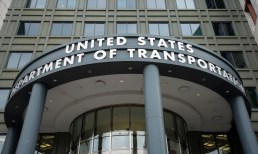The evolution of the payments ecosystem has forced the modernization of treasury functions, as firms rapidly adopt digital ways of managing the data and funds that flow in and out of the enterprise. Treasury banks play a big role in helping corporate clients navigate this new payments landscape in the real-time digital world. Yet industry observers point to the need for a more proactive approach to understanding the relationship between the treasury bank and its corporate and/or government customers, to proactively mitigate the risks of engaging in a real-time, digital world.
“There’s a great need for the immediate integration of solutions and immediate value to the bottom line when considering corporate and government clients and clients of treasury bank partners,” Chuck Moore, vice president of product management at Early Warning Services, told PYMNTS. He remarked that the long integration time and point solutions of the old treasury banking system must pivot more quickly to API-based solutions to react to changes in cash flow and to data solutions that inform smarter decision-making.
Balancing Fraud Mitigation, Privacy and Absolute Zero Friction
As payments get faster, the window to verify account holders on either end of transactions gets even smaller.
Moore noted that the rise of eCommerce and the gig economy has led to tremendous interest and growth in the identity space, upping the importance of validating the receiver’s and sender’s identity before transactions happen. In a real-time world, it is essential to authenticate individuals in order to reduce risks for both the business and the consumer.
Take hospitality, for instance, where a property owner is partnering with a third party to rent a property during certain times of the year. Moore explained that validating the identity of the property owner or the renter becomes critical – not just for a payment transaction, but also for the relationship, asset and comfort of the consumer. “We’re seeing great demand for valid identity and verified identity upfront in the process,” said Moore.
Advertisement: Scroll to Continue
See also: Rampant Check Fraud Problem Puts the Challenge in Challenger Banks
“The ecosystem we live in is faster real-time payments, and that will continue to progress as we go forward. Intermediate steps or blocks in the process are not going to be acceptable. We need to balance three key areas to be effective as we look at account verification broadly,” said Moore.
Fraud prevention is the first, most critical area to consider while discussing identity verification. The industry is witnessing a continued increase in attacks from a fraud perspective. “Consumers are bearing the brunt of the fraud expense, as the latest data suggests,” Moore noted. “These frauds need to be mitigated.”
Privacy, the second essential need for identity verification, is often overlooked – but data minimization and privacy of the consumers’ information is critical. “That’s a tough one to balance, because you’re looking at how to mitigate the fraud while ensuring that you’re only providing the pertinent data to the corporation to validate the identity of the account. That’s a critical piece that all too often is overlooked,” said Moore.
“Absolute zero friction” is the third most critical component to balance when ensuring identity verification. Moore explained that the businesses want to reduce fraud, but the consumer is working with the corporation or a government entity to perform a transaction. The buying and negotiating process is still in demand, and frictions need to be eliminated. Making a micro deposit, for example, is a friction-filled process, and calls for robust solutions.
“We need to account for all of the forces at play here – not just fraud reduction, but really caring for that consumer and the process for our corporations. If we put out products that are hard to integrate and hard for the consumer to use, they won’t be effective,” said Moore.
“Early Warning was designed to balance those three forces – fraud mitigation, privacy and absolute zero friction – and integrate them into existing systems, using aliases to mask the identity of the sender and sharing only the most relevant information between corporates and customers,” Moore explained.
See also: Alt Data Sources Key to Improving Loan Access for the Financially Invisible
The Role of Treasury Banks
A hundred years ago, consumers built in-person relationships with corporations and businesses, which established the identity of both parties and reduced friction due to good service. Some of these values – like quality service and trusted relationships between corporates and consumers – still hold true in the digital universe. Corporates clearly need to demonstrate that they know their consumers, Moore said.
He believes the industry must be diligent in bringing additional data and modeling gear to combat the fraudulent attempts on the technology side. Even though the experience must be seamless for the end consumer, there must be a system to identify potential threats and instantaneously notify the treasury bank and the corporate customer of this activity.
“I think treasury banks are in a unique position to do that, because they’re intimate with how money moves, and how fraudulent behavior affects processes – and they’re also intimate with the tools and technologies [that have the ability to provide a solution to the challenges],” said Moore.




